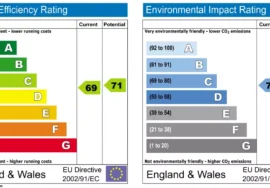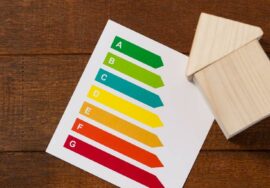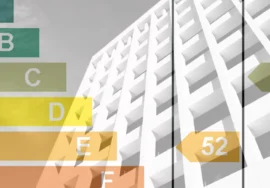Following the November 2021 conclusion of the COP 26 summit, governments all over the globe have pledged to cut their CO2 carbon emissions and work towards net-zero.
The European Commission (EC), as part of its strategy to reduce CO2 emission, proposes that all new buildings be carbon neutral by 2030. This proposal is made in an effort to reduce greenhouse gas emissions, and achieve net-zero goals.
Kadri SIMSON, energy commissioner, stated that “buildings are Europe’s largest energy consumers, using 40% of all our energy and generating 36% of our greenhouse gases. This is because many buildings in the EU don’t have energy efficiency and are still powered largely by fossil fuels’. She further added
“The EU’s worst performing buildings consume more energy than new or properly restored buildings. It’s the most vulnerable that live in the least efficient homes and struggle to pay their bills. Renovations reduce both the energy consumption of buildings and household energy costs, and increase economic activity and job creation.
This is all you need to know about this new proposal:
What are the new building energy regulations?
According to a recent EC plan, new buildings in the EU must have zero carbon emissions by 2030 or sooner. The EU’s ruling council also proposes that the least energy-efficient buildings be updated throughout the same time period in order to assist decarbonize the current property market.
Energy Performance Certificate
The new commission proposal states that buildings must use little energy and be powered by renewables whenever possible. They must also emit no carbon dioxide from fossil fuels on-site. Buildings must also indicate their potential for global warming based on whole-life cycle emissions in their Energy Performance Certificate.
The Energy Performance Certificate (EPC), is akin the Building Energy Ratings (BER) which has been in existence in Ireland since 2009. All homes that are being offered or sold in Ireland must have a BER certificate (or an advisory report) by January 2009.In the twelve years since its introduction, around one million buildings have received a rating.
Rating upgrades
According to the commission, the new proposals would require that the poorest 15% of building stock in each member state be upgraded from a G rating to an EPG scale of at least an F by 2027 (for non-residential buildings) and 2030 (for residential buildings). Buildings for sale or rental must have a certificate. All advertisements should also mention the energy class.
The commission stated in its proposals that all certificates should be based upon a harmonized scale ranging from A to G by 2025. It stated that every state must include renovation in its climate action plan.
The commission stated that this would ensure comparison and tracking of progress and provide a link to mobilizing financing and triggering reforms and investments. These plans should include roadmaps to phase out fossil fuels in cooling and heating by 2040, as well as a path for transforming the national stock of buildings into zero-emission buildings before 2050.
Green housing targets
In an effort to reduce carbon emissions and achieve net zero, many EU governments have established green housing targets.
The UK government, for example, has committed to ensuring that all properties have an Energy Performance Certificate rating of at least C by 2035. The UK’s average EPC rating is currently a D. However, many older buildings are rated at E or below.
If the UK wants to meet its environmental targets, it is crucial that older properties are made more energy efficient. It will be difficult to renovate properties to increase their energy ratings to a B, but there are several incentives and measures that the government has put in place to encourage energy efficiency in the housing sector.
Schemes to enhance building energy efficiency
Mortgages for the environment
Many well-known mortgage businesses have created green mortgages in order to increase energy efficiency and demonstrate their commitment to a more sustainable future. Customers who choose energy-efficient houses are rewarded with green financing. Lower borrowing rates, cash back, and other bonuses are common examples. Natwest, for example, is giving consumers a discounted fixed rate for 2 or 5 years as well as rebates when they buy a house with an EPC rating of A or B.
Green Homes Grant
To make UK homes more affordable and energy efficient, the UK government created a PS2 billion Green Homes Grant scheme.
The scheme allows homeowners and landlords to apply for grants to pay up to two-thirds the cost of energy-saving improvements. The scheme can pay for common home improvements like:
- Insulating walls, roofs and floors can reduce heat loss.
- Upgrade heating systems, or switch to renewable energy.
- Double-glazed windows are used to replace old windows.
- How to install a programmable thermostat?
- The property owner will receive vouchers to be used against home improvement costs if their application is approved. The vouchers must not be used after 31 March 2022.
Epilogue
Global warming is doing havoc on the globe, and governments all over the world have set lofty goals to cut CO2 emissions and achieve net-zero emissions by 2050 or sooner.
The European Commission has suggested that all buildings be carbon neutral by 2030 in order to cut emissions from structures. Governments must guarantee that new buildings meet the greatest energy requirements in order to achieve this. Decarbonizing the current housing market will also be critical to increasing energy efficiency in the property sector.



